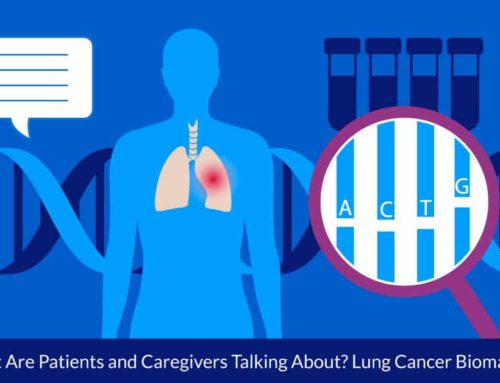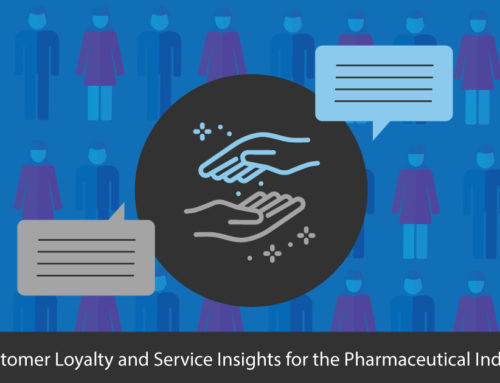Can We Have Your Attention, Please?

By Heather Holder and Odin Soevik
Internet users have a lot of experience in ignoring online advertising. The term “banner blindness” appeared around 1998 to describe online users’ acquired ability to ignore most banner ads as irrelevant to them. That’s 21 years of practice. Presumably, as new forms of advertising are developed, audiences have only gotten better at recognizing ads, and, if average click-through rates are a measurement, overlooking them.
The Role of Personal Relevance
Human brains are designed to perform “selective filtering,” attending to what is immediately relevant and “turning down the mental volume” on the rest.1 Because the whole point of Internet use is that everyone is selectively filtering for his or her preferred content, the key to gaining anyone’s attention is personal relevance.
When the task is presenting some form of direct-to-consumer advertisement (eDTCA), that means going where social media users discuss the health issue that a medication is intended to treat. Treating a condition a reader or a loved one has is relevant.
Just finding targeted users goes a significant way to overcoming invisibility. A German study published in February2 found that personally relevant content in advertisements favorably affected eye movement. Demographic targeting alone resulted in “medium- to large-sized effects on several eye movement parameters,” without affecting brand attitude or website evaluation.
The Role of Personal Perception
The final hurdle to interest is how the ad is perceived. Is it a sales pitch? Is it interesting to that consumer? As a previous Patient Pulse blog post, “Join the Party… Sponsored Content/Native Advertising,” noted, social media users don’t mind commercial content that is presented in the form of information they expected to find in that context already. But they were looking at Instagram posts. When it’s eDTCA, do they have a preference?
Yes. A 2017 research paper reviewing seven years of published research on DTCA techniques,3” found that while both branded and non-branded content were acceptable, the non-branded / unbranded content had a greater impact on a subject’s behavioral intent. In fact, one study found that subjects who had the most positive attitudes toward the presented non-branded content “had a high level of disease state involvement.” That is, the disease in the ad was personally relevant. The same study also found that, “Regardless of involvement level, however, non-branded ads maintained positive attitude levels.4”
Subjects found non-branded / unbranded content more credible: “…consumers felt the advertisement was supportive of disease treatment but remained impartial, as they did not aggressively promote a particular drug purchase.”5
Does credibility lead to action? “Through gaining this credibility, consumers are more likely to trust the advertisements and visit their doctors more often seeking treatment.”6 The credible information was not the end; the consumer wanted to hear more from a medical provider.
Credibility is not the only factor in developing a positive brand relationship, but it is a cornerstone of trustworthiness. A University of Minnesota study7 considering “website trust factors” and behavioral intentions found that consumers who trusted a website with DTC information had an increased “likelihood of returning to the website and further pursuing the drug in consultation with their physicians,” reflecting in an increase in both attitude and behavioral intent.
With DTCA, showing up with credible non-branded /unbranded information is the best way to build a positive brand relationship with motivated consumers and drive positive attention to your other offerings.
Inspire offers a trusted community to patients and caregivers. Our goal with this blog, this website and our content is to provide the life science industry access to the true, authentic patient voice. In so doing, we support faithful operationalization of patient-centricity. Take a look at our case studies, eBooks and news outlet coverage.
References
1Gaines-Lewis, Jordan. “This is how the brain filters out unimportant details.” Psychology Today. February 11, 2015
2 Kaspar, K et al. Personally relevant online advertisements: Effects of demographic targeting on visual attention and brand evaluation
3 Babar, Z, et al. “A review of DTCA techniques: Appraising their success and potential impact on medication users,” Research in Social and Administrative Pharmacy 14 218-227, 2017.
4Rollins BL. “Non-branded or branded prescription drug advertising – which is more effective?” Health Mark Quarterly. 1 Jan;28(1):86-98. 2011.
5 Babar Z, et al. ibid.
6 ibid.
7 Huh J et al. “Trust in prescription drug brand websites: website trust cues, attitude toward the website, and behavioral intentions.” Journal of Health Communications 19, pp. 170-191. 2014.






